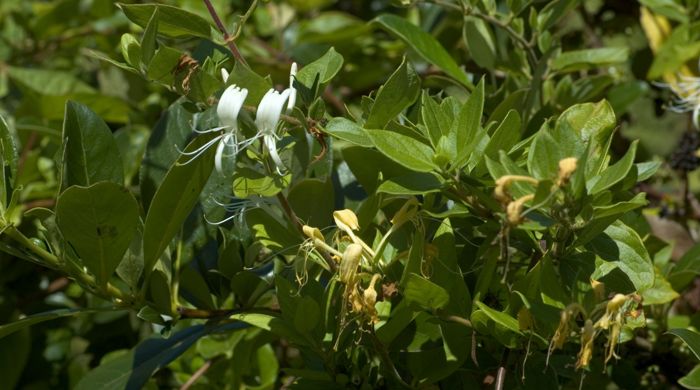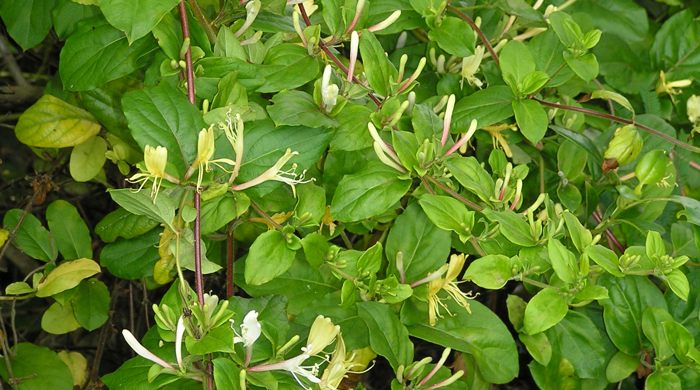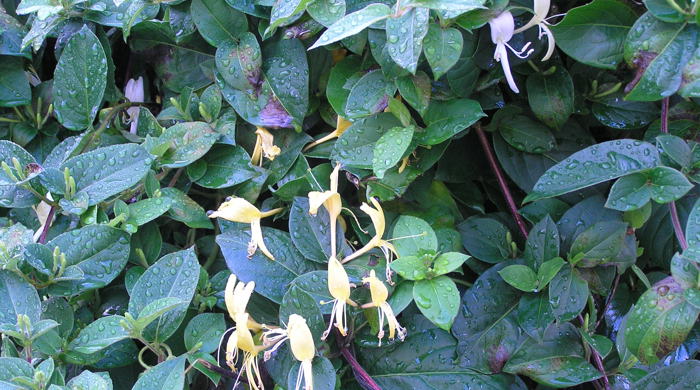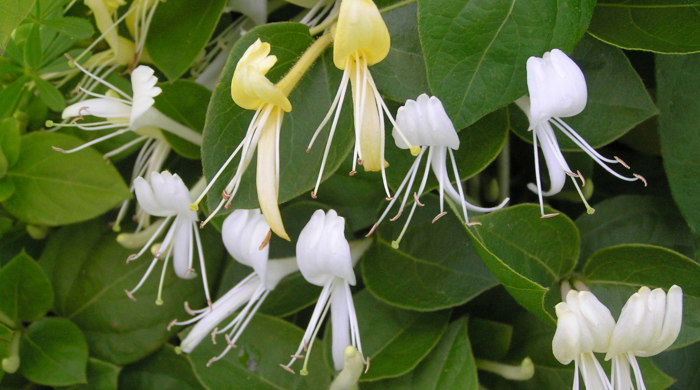Lonicera japonica
Japanese honeysuckle
Family: Caprifoliaceae
Origin: Japan
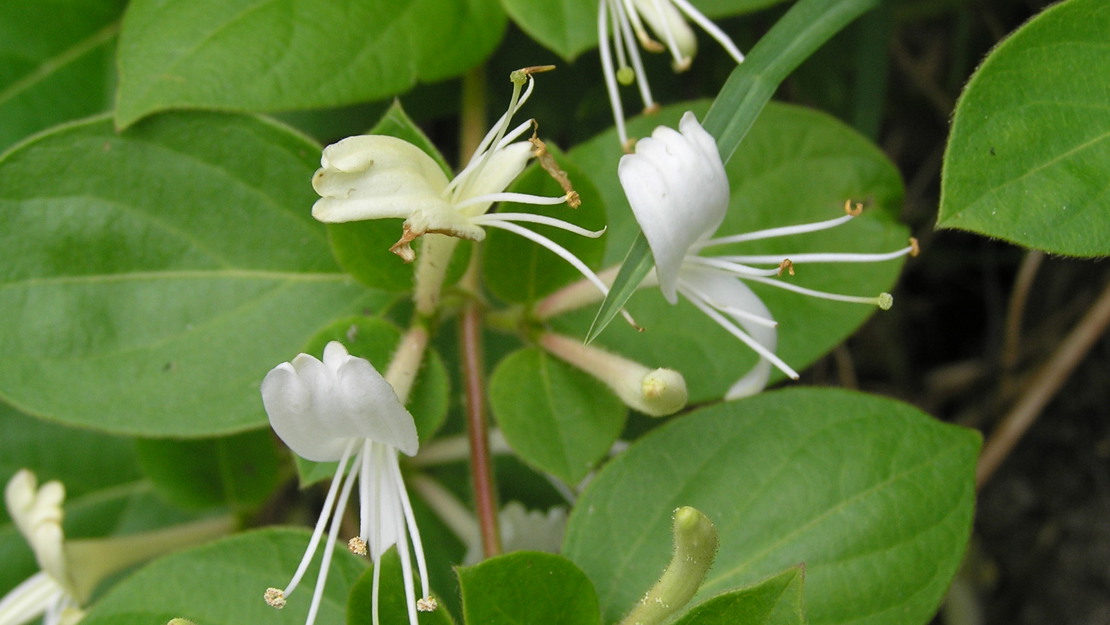
Regional Pest Management Plan (RPMP) status
- Whole region — Sustained control
- National Pest Plant Accord Species
- Waitākere Ranges Heritage Area priority status
- Parkland with Significant Ecological Areas — Site-led (on-park and buffer)
General description
Scrambling, much-branched perennial evergreen climber. Stems are strong, brown, flexible and smooth. Leaves are dark green, opposite and lanceolate. Flowers are fragrant, paired and white/yellow. Fruit is hard and green, ripening to soft black berries.
What you need to know
To help protect our environment:
- You must not breed, distribute, release or sell Japanese honeysuckle. As Japanese honeysuckle is a National Pest Plant Accord species, these restrictions apply within the Auckland region and across the whole of New Zealand.
- You must not plant Japanese honeysuckle within the Auckland region, unless you are transferring an existing plant on your land to another location within the boundaries of the same property.
- You must destroy any Japanese honeysuckle on land that you occupy if it has been planted in breach of the above rules and you are directed to do so by an authorised person.
Auckland Council will manage Japanese honeysuckle in buffer areas of parks, where Japanese honeysuckle is being managed, to an extent that protects the values of that parkland. If you wish to help protect your local parkland, you are encouraged to control or remove any Japanese honeysuckle on your land and plant a better alternative instead.
View a map of park buffers.
To find out more about how we’re protecting Auckland’s parkland from pest plants, visit our pest plant buffer pages.
Habitats
Disturbed sites, riparian and forest margins, scrubland, canopy gaps, bare ground.
Dispersal
Seeds dispersed by birds. Vegetative spread from fragmentation. Human-mediated dispersal through dumping of garden waste and contamination of machinery.
Impact on environment
Forms dense mats, smothering native vegetation. Harbours mice and facilitates other invasive plants. Hosts several pathogens in orchards, overgrows young plants and inhibits pine growth through allelopathy in forestry plantations.
Control
Site Management
Cut and pull vines away from desirable trees and native plants before foliar spraying. Follow up treated areas 3 times per year. Encourage natural regeneration of native plants or replant treated areas where possible after 2-3 treatments to establish dense ground cover and minimise reinvasion.
Recommended approaches
Physical control
Method: Cut vines and leave upper stems to die in trees or dig out.
Plant parts requiring disposal: All parts (except vines if left to die in trees).
Disposal options: Compost in a composting weed bag or remove to greenwaste or landfill if practical.
Biocontrol
Check for presence of agents: Honshu white admiral (Limenitis glorifica).
For more information about how biocontrol works, see What is biocontrol?
Community agrichemical control recommendations
No qualifications: For small infestations: cut stump and paste freshly cut base of stems with metsulfuron gel.
Basic Growsafe certified: For small infestations: cut stump and spray freshly cut base of stems with 1g metsulfuron-methyl per 1L of water or cut vines at waist height and foliar spray vines on the ground with 0.5g metsulfuron-methyl per 1L of water.
Certified Handler/Experienced agrichemical user: For medium to large infestations: cut vines at waist height and foliar spray vines on the ground with 5g metsulfuron-methyl per 10L of water and 20ml penetrant.
For infestations amongst desirable species: foliar spray with 50ml clopyralid per 10L of water and 20ml penetrant (not for use in home gardens).
Caution: When using any herbicide or pesticide please read the label thoroughly to ensure that all instructions and safety requirements are followed.

